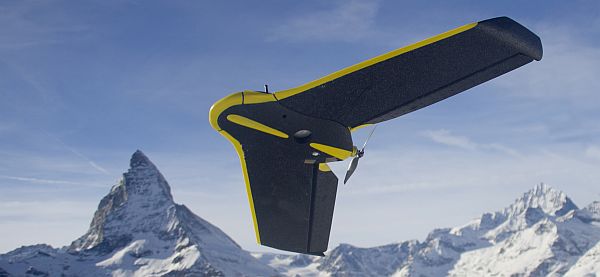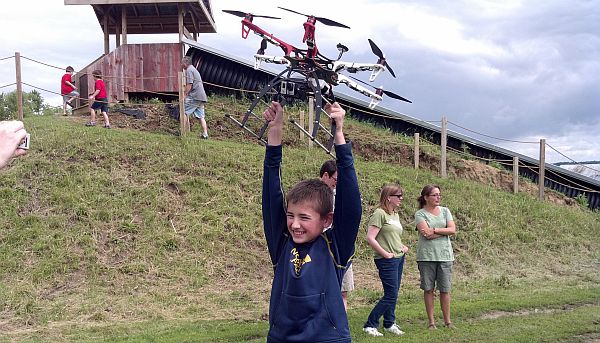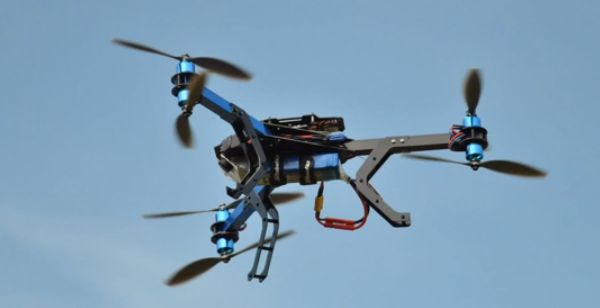Podcast: Play in new window | Download (Duration: 29:42 — 17.1MB)
Subscribe: Email |

Facebook buys a drone company, having enough communications and data bandwidth, an international UAV test consortium announced, UAV training at Roswell, busting FAA myths about UAVs, FAA authority to regulate UAS questioned, privacy questions flare down under, and Russia building Israeli UAVs.
Breaking news: Commercial Drones Are Completely Legal, a Federal Judge Ruled
The News:
Facebook Follows Amazon, Google Into Drones With $60 Million Purchase
Facebook is reportedly purchasing Titan Aerospace for $60 Million. Titan Aerospace makes high altitude solar-powered UAV’s that they refer to as persistent solar atmospheric satellites.™
Facebook is a partner in Internet.org, along with Samsung, Ericsson, MediaTek, Nokia, Opera and Qualcomm. Their objective is to bring everyone in the world with a smartphone into the “knowledge economy” by making Internet services 100 times more affordable.
Accomplishing that means reducing the volume of data served by ten times, and reducing the cost to serve that data by ten times. That’s where Titan comes in.
Drones seen driving spectrum sharing technologies
We talk a lot about the UAS regulations the FAA needs to establish, but there is something else that has to be figured out. All those military and commercial UAVs slated to cloud our skies need com links, and that means enough spectrum has to be available.
International Consortium of Aeronautical Test Sites For UAVs Announced In Quebec
An International Consortium of Aeronautical Test Sites has been created to share information on operational safety, flight regulations, and operational experiences.
This is intended to enable development, testing, and certification of Unmanned Aerial Systems (UAS) and Remotely Piloted Aircraft Systems (RPAS). The Consortium also looks to support creation of international standards for UAS/RPAS construction. Other centers are expected to join the Consortium.
The Consortium was announced by the UAV test and service centre (CESA) in France, the Oklahoma State University – University Multispectral Laboratories, the National Aeronautical Centre in Wales, and the Unmanned Aerial System Centre of Excellence in Quebec, Canada.
Roswell selected as drone plane training center
Strategic Aerospace International is setting up a drone pilot training center in Roswell, New Mexico, starting with 30 Air Force academy graduates in a three month program. SAI has the curriculum at 48 colleges and universities, but needs the airspace to fly the UAVs. They’ll use the Northrop Grumman SandShark UAS.
Busting Myths about the FAA and Unmanned Aircraft
The FAA wants to dispel some of what they consider to be “misconceptions and misinformation” about UAS regulations. Things like control of airspace, what commercial flights are allowable, and can the FAA police all this? So they’ve published a list of seven myths and the “real” facts.
Myth #1: The FAA doesn’t control airspace below 400 feet
Fact: They do.
Myth #2: Commercial UAS flights are OK if I’m over private property and stay below 400’.
Fact: A 2007 Federal Register notice says no.
Myth #3: Commercial UAS operations are a “gray area” in FAA regulations.
Fact: There is no gray.
Myth #4: There are too many commercial UAS operations for the FAA to stop.
Fact: The FAA is watching and has appropriate enforcement tools
Myth #5: Commercial UAS operations will be OK after September 30, 2015.
Fact: Congress mandated that the FAA come up with a safe integration plan by that date. Regulations, policies, and standards will come incrementally.
Myth #6: The FAA is lagging behind other countries in approving commercial drones.
Fact: The U.S. is not like the rest of the world. We have a very busy airspace and we need to get this right.
Myth #7: The FAA predicts as many as 30,000 drones by 2030.
Fact: That’s an old outdated number. Now the FAA estimates 7,500 sUAS by 2018
Free the Beer Drones: Maybe the FAA doesn’t have the authority to regulate unmanned aerial vehicles.
The author believes the U.S. Code and regulations that give the FAA authority, do not define UAVs, so they have no authority. And even if the FAA does have authority, it has not published the documents required to regulate UAVs. Regulatory and statutory law requires public scrutiny and input, and the FAA hasn’t done that.
AFP using drones to investigate major crime as questions raised over privacy
A parliamentary inquiry is looking at drones and their use by the Australian Federal Police (AFP). The AFP maintains use has been limited, like at crime scenes, and admits that covert surveillance would require a warrant. But the Office of the Privacy Commissioner says it has been getting inquiries from the public about the use of drones.
Warplanes: Russia Builds Israeli UAV
After seven years of negotiations and trials, Russia has begun production under license of the Israeli Searcher 2 UAV.
Video of the Week:
Autonomous drones flock like birds
Mentioned:
Williams Foundation calls for fast-tracked UAVs






